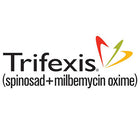Have you ever wondered if there's a foolproof way to protect your beloved dog from fleas and ticks? You're not alone. Many pet owners face the persistent challenge of keeping these pests at bay, worrying about their pets' discomfort and the potential health risks.
Fleas and ticks are not just a normal health issue for your furry friend; they can cause severe skin irritations, and allergic reactions, and transmit serious diseases like Lyme disease and Rocky Mountain spotted fever (RMSF).
Did you know that 82-92% of dog owners across the USA, UK, and Australia preferred a 12-week duration medication over monthly treatments? [source]
This preference highlights the importance of convenience and long-term efficacy in flea and tick prevention.
Here, we'll dive deep into identifying, preventing, and treating these pesky parasites. We'll explore effective methods to keep your dog safe and healthy, highlight the latest trends in flea and tick treatments for dogs, and answer common questions pet owners have.
Let's begin the journey to a flea and tick-free life for your furry friend.
How to Diagnose Fleas and Ticks on Your Dog
Fleas and ticks can be tricky to spot, but knowing the causes and signs can help you take action quickly.
Here, we discuss the causes and signs of fleas and ticks in dogs in a detailed manner:
Causes of Flea and Tick Infestations:
- Outdoor Exposure: Dogs that spend much time outdoors - Especially in grassy or wooded areas, are more prone to picking up fleas and ticks.
- Contact with Other Animals: Interaction with other infested animals can spread fleas and ticks.
- Lack of Preventative Measures: Not using regular flea and tick preventatives can result in infestations.
Signs of Fleas on Dogs:
- Excessive Scratching and Biting: If your dog is constantly scratching, biting, or licking certain areas, it could be due to flea bites.
- Red and Inflamed Skin: Flea bites can cause red, inflamed patches on your dog's skin, often leading to hair loss.
- Flea Dirt: Small black or brown specks (flea feces) on your dog's skin and bedding are indicators of a flea infestation.
- Restlessness: Fleas cause discomfort, leading to restlessness and irritability in dogs.
Symptoms of Ticks on Dogs:
- Visible Ticks: Ticks are often visible, especially in areas like the ears, neck, and between the toes. They look like small, rounded bumps.
- Scabs and Sores: Tick bites can cause scabs or sores, sometimes accompanied by redness and swelling.
- Lethargy: Tick infestations can also lead to fatigue and lethargy due to the loss of blood and potential transmission of diseases.
By regularly checking your dog for these signs and understanding the causes, you can catch infestations early and take prompt action.
Dog Tick And Flea Treatment Options
| Method | Advantages | Some Useful Products |
|---|---|---|
| Topical Treatments | Easy to use,effective for a month, repels mosquitoes and lice. |
|
| Oral Medications | No mess, highly effective, protects against heartworms and intestinal parasites. | |
| Collars | Long-lasting protection, water-resistant, cost-effective. | |
| Essential Oils & Herbal Treatments | Chemical-free, additional benefits like improved coat health. | |
| Medicated Shampoos | Immediate relief, easy to use. | |
| Fine-Toothed Flea Combs | Simple, non-chemical method. | |
| Tick Removal Tools | Prevents infections, easy to use. | |
| Prescription Medications | Highly effective, tailored to specific needs. | |
| Professional Grooming | Specialized products, equipment, and treatments. |
However, effective flea and tick control goes beyond just treating your dog. Managing the environment is important to prevent reinfestation and ensure your dog stays pest-free. Here are some key strategies:
Managing Home Environment:
- Regular Cleaning: Vacuum your home frequently, especially in areas where your dog spends a lot of time. Wash your dog’s bedding and any removable covers on furniture.
- Flea Bombs and Sprays: Use flea bombs or sprays to treat your home. Focus on carpets, rugs, and furniture, as these are common hiding spots for fleas.
- Dehumidifiers: Fleas thrive in humid environments. Using dehumidifiers can help create an unfavorable environment for them.
Maintaining Yard Environment:
- Yard Maintenance: Keep your yard tidy by regularly mowing the lawn, trimming bushes, and removing leaf litter. These are common places where ticks hide.
- Outdoor Sprays: Apply pet-safe insecticides to your yard to reduce flea and tick populations. Focus on shaded areas and places your dog frequents.
- Barrier Treatments: Create barriers with gravel or wood chips between your lawn and wooded areas to deter ticks from migrating into your yard.
You reduce the chances of your dog encountering fleas and ticks, creating a safer environment for them to enjoy by maintaining a clean home and yard.
How to Prevent Flea and Tick Infestations in Dogs
Prevention is better than cure and to prevent Flea and Tick Infestations in Dogs, it is recommended to:
- Schedule regular visits to the veterinarian for routine check-ups. Vets can help identify early signs of fleas or ticks and provide professional advice on prevention methods. They can also recommend appropriate treatments if necessary.
- If you live in an area with a high risk of tick exposure, consider using protective clothing for your dog, such as tick-repellent vests or booties. These can act as a physical barrier between your dog's skin and potential ticks in the environment.
- Explore the use of natural repellents that are safe for dogs. These can be applied topically or used in the form of sprays or shampoos to help deter fleas and ticks.
- Be extra vigilant during peak flea and tick seasons. For example, fleas thrive in warmer months, while ticks are most active in spring and autumn. Adjust your prevention strategies accordingly during these high-risk periods.
- Encourage neighbors and friends with pets to implement flea and tick prevention measures. Community-wide efforts can help reduce the overall population of these parasites in your local environment, benefiting all pets in the area.
- Maintain good hygiene practices for your dog, such as regular bathing and grooming. This can help reduce the risk of fleas and ticks taking up residence in your dog's coat and make it easier to spot any parasites during grooming sessions.
- Take extra precautions while traveling with your dog, especially to areas known for fleas and ticks. Research the specific risks of the area and consult your veterinarian for any additional prevention measures or treatments that may be necessary.
- If you use pest control services for your home or yard, ensure they use pet-safe products and treatments. Communicate with the pest control company about your concerns regarding fleas and ticks, and request methods that are safe for your furry friend.
Remember, by being proactive and implementing a combination of these prevention strategies, you can significantly reduce the chances of your dog encountering fleas and ticks, keeping them happy and healthy!
Special Considerations for Puppies and Senior Dogs
When it comes to treating fleas and ticks in puppies and senior dogs, there are some special considerations to keep in mind due to their unique physiological needs.
Puppies:
- Age Restrictions: Most flea and tick products have age restrictions, and they are typically not recommended for puppies under a certain age (often 7-8 weeks old). This is because their developing bodies may be more sensitive to certain chemicals, and their livers may not be fully developed to process the medications effectively.
- Weight Restrictions: In addition to age, weight plays a vital factor. Many flea and tick treatments are weight-specific, so it's essential to choose a product that corresponds to your puppy's current weight. Using a product meant for larger dogs on a small puppy can be dangerous.
- Veterinary Guidance: Always consult your veterinarian before administering any flea and tick treatment to your puppy. They can recommend safe and effective products suitable for their age and weight. Your vet can also guide you on when it's safe to start treating your puppy and provide advice on proper dosage and application methods.
- Natural Alternatives: If you're concerned about using chemical treatments on your puppy, explore natural alternatives like Tropiclean Natural Flea & Tick Yard Spray for your yard. These options are gentler and can help reduce the risk of fleas without exposing your puppy to potentially harmful chemicals.
Senior Dogs:
- Age-Related Changes: As dogs age, their bodies undergo physiological changes that can affect how they process medications. Senior dogs may have reduced liver and kidney function, making it crucial to choose age-appropriate treatments. Always read the labels of flea and tick medications for any warnings or precautions regarding use in older dogs.
- Medication Interactions: If your senior dog is on other medications for existing health conditions, consult your veterinarian to ensure that the flea and tick treatment you choose won't interact negatively with their current medication regimen.
- Reduced Tolerance: Older dogs may have more sensitive skin or underlying health issues that make them less tolerant of certain treatments. Look for products that are gentle on the skin and avoid excessive chemical exposure. Natural options or essential oil-based treatments may be better tolerated by senior dogs.
- Veterinary Assessment: Regular veterinary check-ups become even more important for senior dogs. Your vet can assess your dog's overall health and make tailored recommendations for flea and tick prevention and treatment, taking into account their unique circumstances.
It's crucial to be extra vigilant when treating fleas and ticks in puppies and senior dogs. By taking a cautious and informed approach, you can ensure the safety and well-being of your furry companions while effectively managing these pests.
Always seek professional advice from your trusted veterinarian to develop a treatment plan that considers the specific needs of your puppy or senior dog.
Final Words!
All in all, managing fleas and ticks on dogs involves a combination of preventative measures, prompt treatment, and environmental control. Moreover, consult your vet to choose the best products tailored to your dog's needs and consider natural remedies if suitable. By staying vigilant and proactive, you can keep your dog healthy and free from these pesky parasites.
Take action now with Hardy Paw’s comprehensive range of flea and tick prevention products to ensure your dog stays protected year-round!
![Fleas & Ticks on Dogs - Diagnose, Treatment & Prevention [2024] | HardyPaw](http://hardypaw.com/cdn/shop/files/tm-hardypaw-logo-800x200_250x.png?v=1669662342)


![Antihistamines for Dog Allergies - Types, Symptoms and Treatment [GUIDE]](http://hardypaw.com/cdn/shop/articles/Antihistamines_for_Dog-Allergies_600x.png?v=1721129810)
![Sun Safety Tips for Pets - Sunscreens, Protective Clothing [2024]](http://hardypaw.com/cdn/shop/articles/dogsummer_600x.jpg?v=1717092656)





